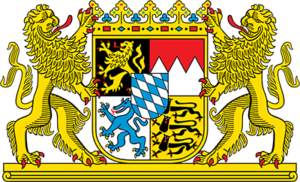550 Years of LMU Medicine
Ceremonial act in the Allerheiligen-Hofkirche of the Munich Residence in the presence of the patron and Bavarian Minister President Dr. Markus Söder.
October 2022

© IZB, Susanne Simon
Ceremonial act in the Allerheiligen-Hofkirche of the Munich Residence
“Congratulations on medical excellence since 1472. We are proud of our university hospitals. They offer the highest level of research, teaching and patient care.”
Dr. Markus Söder
Bavarian Minister President
In 1472, it was one of the four founding faculties of the first university in Old Bavaria. Today, the Medical Faculty – as well as the Clinical Center – of the Ludwig Maximilian University are among the largest of their kind in Germany. LMU Medicine celebrated its 550th anniversary on Thursday, October 13, 2022, with a ceremony under the patronage of Bavarian Minister President Dr. Markus Söder. Famous Munich LMU physicians include, for example, the hygienist Max von Pettenkofer, the pediatrician August von Hauner, and the psychiatrist Emil Kraepelin. Important achievements and milestones of LMU medicine include the Dornier kidney stone crusher and Germany’s first heart transplant. An insight into the eventful history and long tradition of LMU Medicine is provided by the commemorative publication “550 Years of LMU Medicine – Excellence since 1472”, which will be published at the ceremony.
During the ceremony, Bavarian Prime Minister Dr. Markus Söder congratulated on 550 years of medicine at Ludwig Maximilian University in Munich: “Congratulations on medical excellence since 1472. We are proud of our university hospitals. They offer the highest level of research, teaching and patient care. With the Hightech Agenda Bavaria, we are promoting innovations in the key technologies of the future. We provide the best medical care throughout the state. My thanks and appreciation: your work makes our lives longer and better.” The Medical Faculty and LMU Hospital are among the largest and best in Germany and Europe, said Prof. Dr. Markus M. Lerch, Medical Director and Chairman of the Board of LMU Hospital, in his welcoming remarks at the ceremony. “We serve the health of our patients, the research of their diseases and the education of our students at the highest international level. The core and soul of LMU Medicine is made up of the team spirit of all professional groups and – for 550 years – the demand for excellence that is lived by all.”
The beginnings of the Munich era of LMU Medicine.
In 1472, the Faculty of Medicine was one of the four founding faculties of the first University of Old Bavaria in Ingolstadt. After a stopover in Landshut from 1800 to 1826, the Ludwig-Maximilians-Universität moved to the state capital of Munich at the instigation of King Ludwig I. The university was founded in 1813. The General Municipal Hospital near Sendlinger Tor – the largest in Bavaria with 600 beds – which had already opened in 1813, now became the university hospital. In 1832, the Sisters of Mercy of St. Vincent de Paul took over nursing care, which they continued to do until the year 2000. In the 19th and early 20th centuries, a number of specialized clinics and institutes were built near Sendlinger Tor, including the Polyclinic, the Surgical Clinic, and the Royal University Women’s Clinic and Midwifery School on Maistraße.
The newly established facilities are often closely associated with well-known medical personalities of the time: in 1846, August von Hauner opened the first children’s clinic in Sonnenstrasse; in 1882, this moved to its present location in Lindwurmstrasse. In 1877, Hugo von Ziemssen founded the first German Clinical Institute; in 1879, the world’s first Hygiene Institute opened under Max von Pettenkofer, and in 1904, the Royal Psychiatric Clinic opened under Emil Kraepelin. In 1903, the LMU became the first faculty in the German Empire to train female physicians; in 1918, Adele Hartmann was the first woman in Germany to habilitate – at the LMU Medical Faculty.
The road to Großhadern
After the horrors of the Nazi era, which also left deep scars on medicine, the campus in the city center soon became too small for the growing number of students, researchers and patients. In 1955, the decision was made to build what was then the most modern university hospital in Europe on the outskirts of the city in Großhadern: Here, all clinics were brought together under one roof in a 60-meter high and 205-meter long ward block. The construction of the Großhadern Hospital took around ten years; the first patient was admitted on September 16, 1974. In 2014, the new surgery center – at the time the largest and most modern surgery center in Europe – was completed in Großhadern. In 1999, the Großhadern and Innenstadt hospitals merged, and from then on LMU Klinikum München continued to develop at both sites. In 2021, the Klinikum Innenstadt opened next to the old General Hospital from 1813 – the so-called Ziemssenklinik. It houses the departments of internal medicine, surgery, obstetrics and the emergency room.
In the area of research and teaching, from the 1970s onward, not only did many medical and life science institutes follow the faculty and the university to the Großhadern campus, but a biotechnology cluster and two Max Planck Institutes also settled in the immediately neighboring Martinsried. The close connection to research is also reflected in patient care. A milestone of more recent times is the kidney stone disintegrator, which LMU physicians developed together with a team from the aircraft manufacturer Dornier and which was used for the first time in 1980. Following Germany’s first heart transplant in 1969 at the downtown hospital, Germany’s first heart-lung transplant was performed in 1983 at the Großhadern Hospital by heart surgeon Prof. Dr. Bruno Reichart. Structurally, too, new paths were taken in Großhadern. One example is the Center for Stroke and Dementia Research, made possible by a foundation, with an outpatient clinic, research laboratories and the headquarters of the German Center for Neurodegenerative Diseases in Munich.

© LMU
Bavarian Prime Minister Dr. Markus Söder (center) was patron of the ceremony marking 550 years of LMU Medicine, here with Prof. Dr. Thomas Gudermann (left), Dean of the Medical Faculty of Ludwig Maximilian University, and Prof. Dr. Markus M. Lerch, Medical Director and Chairman of the Board of LMU Hospital.
Best minds, good structures, strong alliances
“Ludwig-Maximilians-Universität has been an important place of science and knowledge transfer for 550 years now and is one of the best universities in the world today. As one of the four founding faculties of the university, its medical faculty and university hospital also make a significant contribution to this. Our medicine delivers top performance in all dimensions of research, teaching and patient care,” said Prof. Dr. Dr. h.c. Bernd Huber, President of Ludwig-Maximilians-Universität München.
With 2,000 beds and around 11,500 employees in approximately 50 specialist clinics, institutes and departments, the LMU Hospital is today the second largest hospital in Germany. Every year, 500,000 outpatients and inpatients are treated there. The Medical Faculty trains the most medical students nationwide, currently around 6,000. “Best minds, good structures, strong alliances – that’s the motto we try to put into practice in our daily work,” said Prof. Dr. Thomas Gudermann, Dean of the Medical Faculty in his keynote speech “LMU Medicine: Yesterday, Today, Tomorrow.” “We are the only faculty in Germany represented in all eight German Centers for Health Research, making us unique in the breadth of medical excellence.” In addition, there are six Collaborative Research Centers of the German Research Foundation, in which LMU acts as spokesperson. As a leading full faculty, LMU’s Medical School is able to train young future physicians from the first to the last semester in all disciplines at the current state of knowledge and the highest level, Gudermann said. In addition to the “Munich Clinician Scientist Program,” which closely integrates research and patient care, the Munich Medical Curriculum (MeCum), which is based on the Harvard Medical School’s concept of problem-based learning, deserves special mention.
Research, teaching and patient care are closely interlinked
The close links between research, teaching and patient care are also visible in numerous research projects: for example, some 140 years after Pettenkofer founded the world’s first hygiene institute, the Tropical Institute developed a wastewater monitoring system to make virus variants visible at an early stage in a pandemic (especially in the case of Sars-CoV-2). 53 years after the first heart transplantation in Germany at the LMU Klinikum, scientists and physicians at the LMU Klinikum are researching the possibilities of xenotransplantation, i.e. the transplantation of animal cells, tissues and organs to humans. In keeping with August von Hauner’s motto that children are not small adults, a nasal spray vaccination against Covid-19 is currently being developed at the Dr. von Hauern Children’s Hospital, also to spare children a “prick”. Projects to digitize LMU Medicine range from the nursing robot Jeeves to a new deep learning method for automated diagnosis of a diabetes-related eye disease to the use of preoperative training apps in orthopedics.
550 years of LMU Medicine on around 90 pages
As part of the anniversary, the commemorative publication “550 Years of LMU Medicine – Excellence since 1472” was created and published by August Dreesbach Verlag. A team led by historian Dr. Michael Kamp presents the eventful history of LMU Medicine in a concise, multifaceted and richly illustrated way. The historical outline is broken up by short portraits of important physicians and researchers of LMU Medicine, the description of new procedures as well as statements by historical personalities and contemporary witnesses, and spans the arc into the future with the planned building and structural projects. Link to 550 Years of LMU Medicine: https://www.lmu-klinikum.de/550-jahre-lmu-medizin



